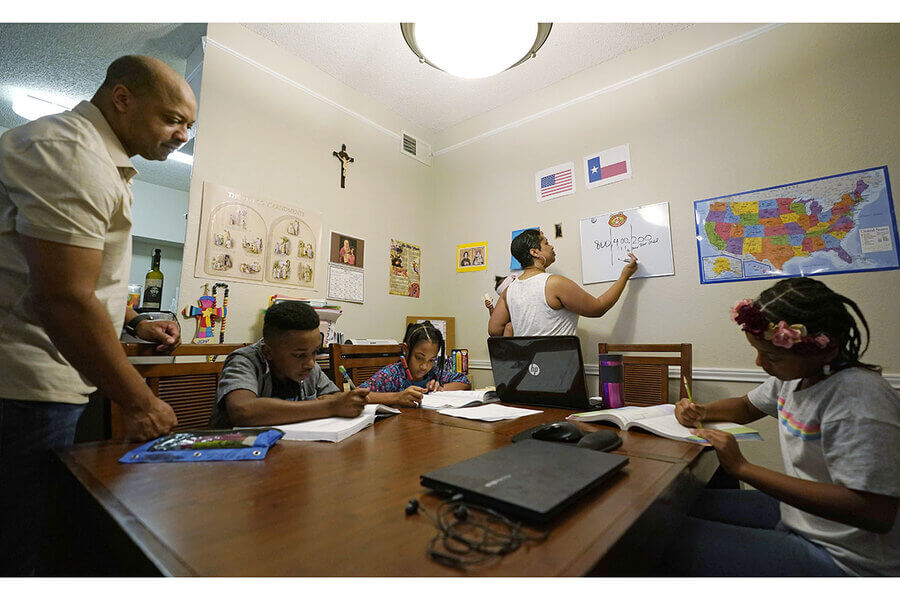In the 1970s and ’80s, groups of primarily white, Christian fundamentalists drove a surge in the number of home-schooling families around the United States. As they pulled their children out of public schools, they also worked to dismantle state and local regulatory hurdles that kept kids in bricks-and-mortar institutions. By 1994, over 90% of families who home-schooled were white.
During the pandemic, there’s been another increase in the number of families that are home-schooling, only this time, the families leading the charge are decidedly more diverse.
Census data shows that rates of home schooling doubled between the start of the pandemic in March 2020 and the fall of that year. The largest growth was among Black families, with a fivefold increase, but all racial groups tracked have seen increases. By October 2020, nearly 20% of adults who reported home-schooling their children were Black, 24% were Hispanic or Latino, and 48% were white, according to data from the Household Pulse Survey by the U.S. Census Bureau. The same survey found that only 19% of all adults who reported home schooling have a bachelor’s degree or higher, and 53% report their income to be less than $50,000 a year.
Why We Wrote This
The pandemic has prompted families to rethink the best way for their children to learn. For some parents, the decision to home-school is driven by culture as much as by academics.
According to Census data, the number of Hispanic families home-schooling doubled over the first several months of the pandemic. This increase has been felt by leaders on the ground, including those who run home-school groups or online home-school communities for Hispanic and Latino families.
Gisela Quiñones in Indiana has been home-schooling her two children for years and runs a Facebook group for Latino families who home-school. Over the course of the pandemic, “the group pretty much exploded nationally,” says Ms. Quiñones, mother of a 10- and a…







